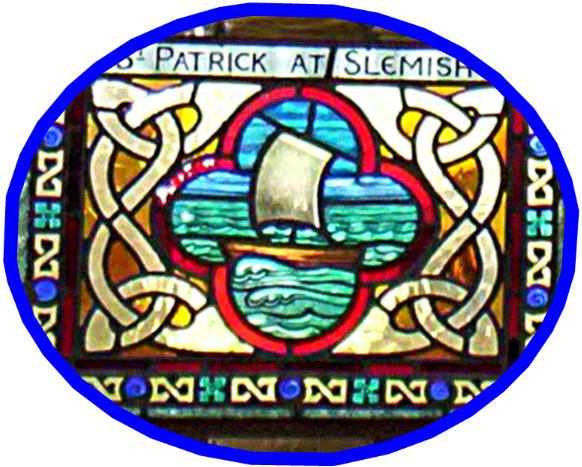ST PATRICK
St Patrick, the patron saint of Ireland has a special association with the parish of Dunseverick. It is believed that the saint once visited the area and founded a religious establishment at Templastra. It is recorded in the Book of Armagh, that he ordained Olcan as bishop and appointed him to the charge of the See of Armoy, which was later merged with the See of Connor. Prior to his coming to Ireland as a missionary, St Patrick was taken as a slave to the Hill of Slemism, County Antrim, where he spent six years. He escaped, and more than a decade later returned with the message of Christianity. His period in confinement on Slemish Mountain, where he worked as a shepherd, is captured in beautiful simplicity in a fine stained glass window at the rear of Ballintoy parish church.
Upon his return to Ireland St Patrick immediately set about disseminating biblical teaching and taking Christianity to regions of the country never before reached.
Such evangelical activity was to bring him into direct conflict with the druids who were central and influential figures in the pagan world that he sought to change. Given that paganism and Christianity represented two diametrically opposing forces, there is more than a hint of irony in the name selected for the rectory of Ballintoy: Mount Druid House. Paradoxically, it was chosen by Revd Robert Trail (1754-1842), since his new rectory of 1791, was to share a hill with a 'Druid's temple'. Dating back to Neolithic times, Revd Trail's 'Druid's temple' is an ancient passage grave or dolmen. An all-stone structure, it was originally supported by five upright boulders (two are now dislocated), each measuring three to four feet in height. Together they encircle a rectangular chamber, under a capstone of approximately six feet square.
© Copyright 2006 - Nigel G. R. Johnston M.A.
